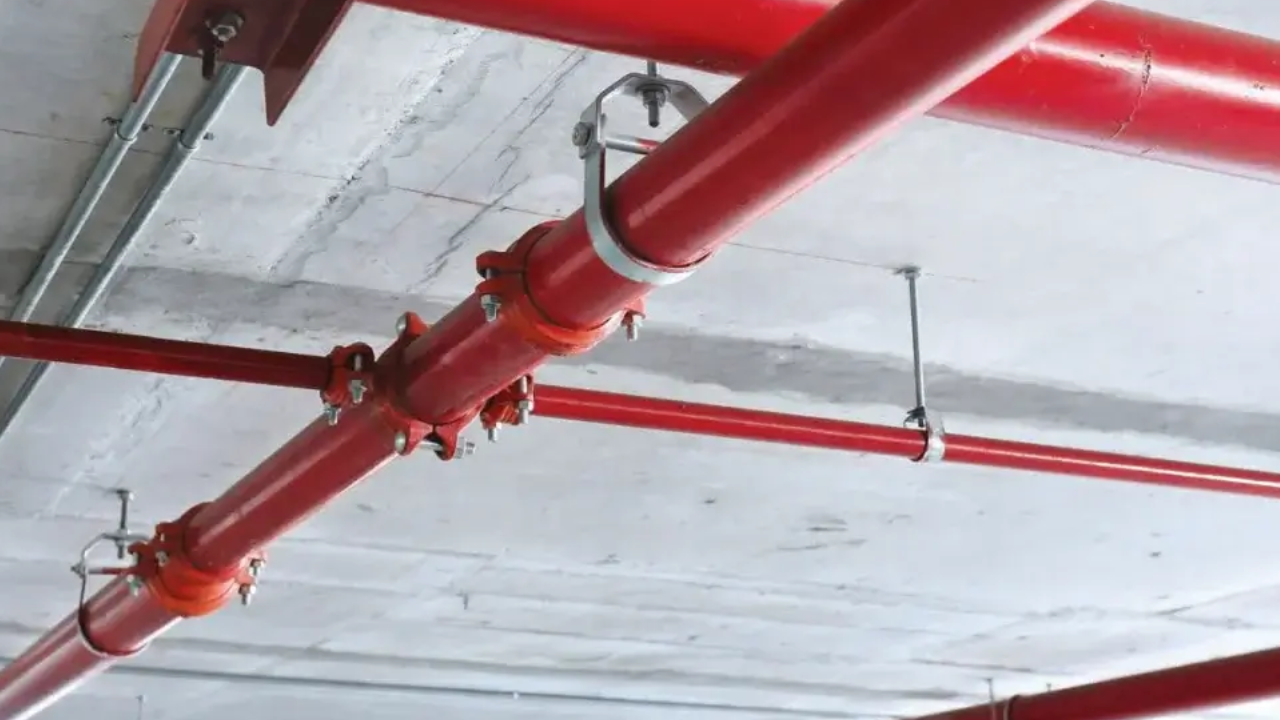During a fire, fire sprinkler piping systems act as the first line of defense, protecting structures and people. These precisely built systems consist of a network of pipes strategically placed throughout buildings to distribute water quickly to regions impacted by fire. The importance of these systems arises from their capacity to operate immediately in response to heat or smoke, minimizing the impact of a fire before it spreads.
Fire sprinkler piping systems are typically built with strong materials like steel and comply with strict standards. The design and construction of fire sprinkler pipe require careful consideration of building layouts, occupancy types, and fire threats. Fittings are used to provide smooth integration and efficient water distribution. Thorough testing, such as pressure and flow tests, certifies the system’s readiness. Regular inspections are required to identify and address possible flaws, thereby ensuring the system’s functionality.
How Are Fire Sprinkler Piping Systems Designed?
Fire protection engineers create painstakingly planned fire sprinkler piping systems. The procedure entails a detailed evaluation of building layouts, occupancy patterns, and fire hazards. Engineers assess the best location of pipes, sprinkler heads, and other components to ensure adequate coverage. The design adheres to standards, taking into account the building’s requirements and offering a blueprint for the construction of a dependable and compliant fire sprinkler system.
Types of Connections in Fire Sprinkle Piping System
The UL-listed fire sprinkler piping system is an important part of building safety, designed to respond swiftly and efficiently to fire emergencies. The connections within this system are critical to guaranteeing the integrity, reliability, and effectiveness of the whole fire suppression network. In this detailed article, we will look at different types of connections that are often used in UL-listed fire sprinkler piping systems.
Threaded Connections
Threaded connections are a traditional and extensively used approach for fire sprinkler piping systems. This sort of connection includes twisting the ends of pipes and fittings together to form a secure union. Threaded connections are simple to assemble and remove, making them ideal for small-diameter pipes and low-pressure systems. However, care must be taken during installation to avoid leaks.
Grooved Connections
Grooved connections use a mechanical coupling mechanism that consists of grooving the ends of pipes and connecting them with a gasket and coupling housing. This technology provides a strong and flexible connection, which is especially useful for bigger-diameter pipes and high-pressure applications. Grooved connections are widely used in modern fire sprinkler systems due to their ease of installation, maintenance, and variety.
Flanged Connections
Flanged connections feature flanges at the ends of pipes that are fastened together with a gasket in between. Flanged connections are strong and ideal for high-pressure applications. While flanged connections may require more labor to install than grooved connections, they create a secure and leak-resistant junction. They are frequently utilized in sensitive applications where dependability and structural integrity are paramount.
Welded Connections
Welded connections involve the fusion of pipe ends through welding. While not as easily disassembled as threaded or grooved connections, welded joints provide a strong and seamless connection. Welding is often used in high-pressure systems and situations where structural integrity is paramount. Proper welding procedures and inspections are critical to ensuring the quality and reliability of the connection.
Press-Fit Connections
Press-fit connections are a relatively new advancement in fire sprinkler piping systems. This process consists of pushing pipes and fittings together with a hydraulic press. Press-fit systems are noted for their ease of installation and adaptability for a variety of applications. Press-fit connections are an economical and reliable option because they establish a secure and tight fit without the need for heat or additional materials.
Flare Connections
Flare connections use a tapered end of the pipe that is matched with a similar fitting, resulting in a seal when tightened. Flare connections are more typically linked with gas lines, although they can also be utilized in fire sprinkler systems. They provide a dependable and easy-to-assemble connection, making them ideal for applications that require a secure and leakproof union.
Sum Up
The choice of connection types in UL-listed fire sprinkler piping systems is critical to assuring the safety, dependability, and effectiveness of these life-saving systems. Choosing the best connection type becomes more important in satisfying the unique requirements of each fire protection project. Engineers, architects, and installers must carefully analyze these issues to make sound judgments and contribute to the creation of robust and standardized fire sprinkler systems.

